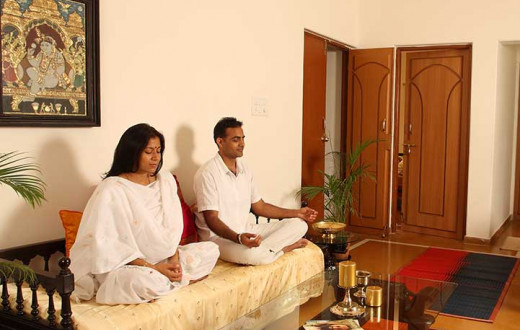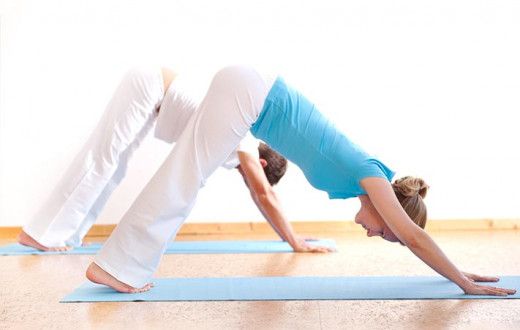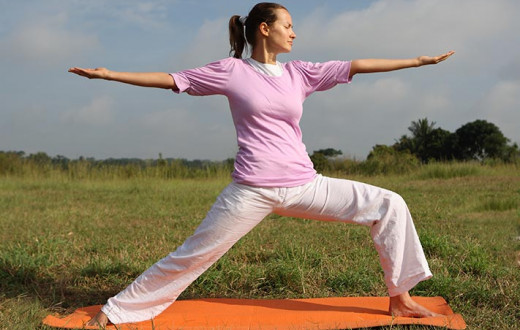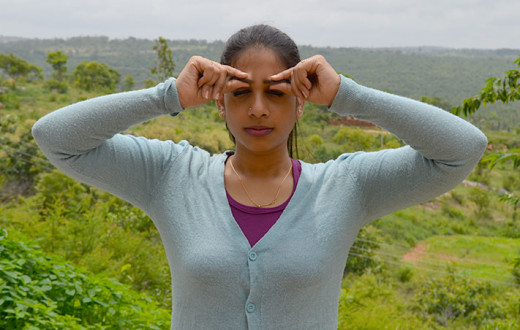Spring is going to be here soon, so are the dreaded allergies…
Spring is beautiful, but it's also a key time of year for seasonal allergies. As plants release pollen, millions of people with hay fever start to sniffle and sneeze. But spring is not just the only season, allergies can grip you even in Summer, Fall, Winter, say any time of the season.
A real scary thing about sinusitis, throat infections and allergies is that you can see them coming, but are helpless to do anything about it. You must have tried many prescription medications and treatment without much solace except for some temporary relief. Medications - at best - only suppress the symptoms But add their own unique ones in the bargain.
What is Allergy?
A condition of hypersensitivity or abnormal or exaggerated reaction of the immune system to a substance (an allergen) considered harmless to most people. Exposure (consumption, inhalation, physical contact, etc.) to such substances causes the body to undergo a reaction, often resulting in symptoms such as difficulty in breathing and/or swellings/rashes of the skin. These reactions are usually acquired, predictable and rapid.
- Allergy involves an exaggerated response of the immune system.
- The immune system is the body's organized defense mechanism against foreign invaders, particularly infections.
- Allergens are substances that are foreign to the body and can cause an allergic reaction.
- Allergens bind to antibodies, which set off the release of chemicals called histamines. They, in turn, bind to receptors in your nose and set off the symptoms associated with allergies, like inflammation.
- IgE is the allergy antibody.
- Allergies can develop at any age.
- Your risk of developing allergies is related to your parents' allergy history.
 Types of Allergies
Types of Allergies
Allergies come in many distinct forms and are typically grouped in general categories according to the types of substances that cause them or the parts of the body they affect.
1. According to Type of Substance:
Most common are -
- Food Allergies
- Drug Allergies
- Insect Bite Allergies
- Pollen Allergies
- Dust Allergies
- Animal Allergies
2. According to the parts of the body affected:
- Respiratory Allergies
- Skin Allergies
- Eye Allergies
- Stomach Allergies
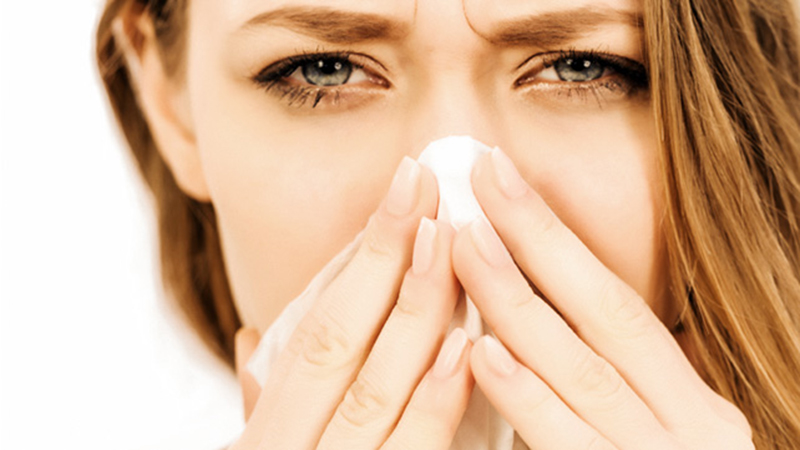
What are the symptoms of Allergy?
1. Respiratory:
- Allergic Rhinitis
- Runny nose
- Stuffy nose
- Sneezing
- Nasal itching (rubbing)
- Itchy ears and throat
- Post nasal drip
- Shortness of breath
- Asthma
- Wheezing
- Coughing
- Chest tightness
2. Eye:
- Allergic Eyes
- Redness under the lids and of the eye overall
- Watery, itchy eyes
- Swelling of the membranes
3. Skin:
- Allergic Eczema
- Itching, redness, and or dryness of the skin
- Rash on the face, especially children
- Rash specially around the eyes, in the elbow creases, and behind the knees
- Hives
- Raised red welts
- Intense itching
Allergies and sinusitis are very irritating and nagging health problems that we come across very commonly. Here is one very easy and sure remedy to get rid of this problem…- “Jal Neti.”
Well, to put it simply, Jal Neti or Saline Nasal Irrigation or Nasal Wash can be as routine as brushing your teeth or as you take shower and it is very easy to do. So, clear your nostrils and start the day breathing freely. The aim of the process is to purify and clean the nasal path right from the nostrils to the throat using water. The process may sound unimaginable and the very first reaction would be, “My God, how can I do this, putting water inside the nose…!” and you may be tempted not to learn this at all! But once, you do it, you will say, “Oh, this is so easy and wonderful!”
History of Jal Neti
The ‘nasal wash’ has its origin in ancient India and has been practiced for ages by ancient yogis and people for the cleansing process. Yogis have practiced it for centuries for its innumerable and powerful benefits. Jal Neti is one of the six-purification kriyas or procedures or ‘Shatkarmas’ mentioned in Hatha Yoga Pradipika, an ancient yoga text. Cleansing kriyas prepares the body for higher practices of yoga.
Over time, our sinus cavities get clogged with impurities which can cause infections, headaches, and inflammation. This is a natural technique used by the yogis to stay disease free and most importantly to use the breath well for their yogic practices without any blocks. It is all about nasal hygiene just like brushing teeth is about dental hygiene. The aim of Jal Neti is to purify and clean the entire upper respiratory passage right from the nostrils to the throat using water.
In yoga, it has been also used for its extremely powerful physical, psychological and spiritual benefits. However, in the modern world of instant results - Jal Neti has gained immense popularity because of its dramatic effect on the sinuses and allergies.
Medical guidelines in both the United States and Canada are now recommending nasal and sinus saline flushing for a variety of conditions. It’s an effective and well-tolerated form of treatment for sinus congestion and nasal drip due to the common cold, allergies, and sinusitis. By using this natural method of healing, people have found they need less medication to control their symptoms. Some are even able to abandon pills and steroid sprays completely.
Science of Jal Neti
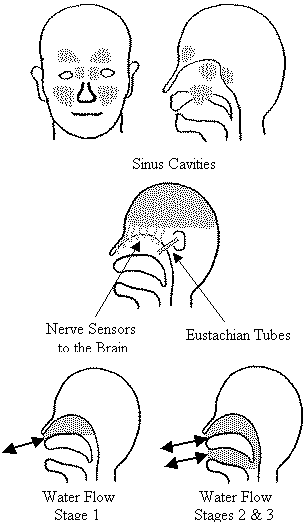
The nose is the “air conditioner” of the body. One of the many functions of the nose is to regulate the temperature and humidity of the incoming air. Some people have “dry noses” and suffer dry, crusty, nose bleed, allergies type problems. Others are “wets”, with the constantly running sinuses and always carry tissue paper or handkerchief as a companion! Others have perpetual stuffy and “blocked nostrils.” Regular practice of Jal Neti helps to establish the correct working environment of temperature and humidity in the nose. It is a kind of “moisturizer” for “dry noses.”
Jal Neti rinses out the dirt and bacteria filled mucous lining as the warm water loosens and dissolves any internal build ups, and takes them outwards. It also can whisk away bacteria, thin mucus, and cut down on postnasal drip. Due to gravity and a venturi-effect, the sinus passages are also drained by the vacuum pressure flow of the water. Whereas it would normally be impossible to drain a “dead-end” cavity like the sinuses, Jal Neti achieves this ingeniously and simply.
Many research studies have proven safety and numerous benefits of regular Jal Neti practice.
How to do it?
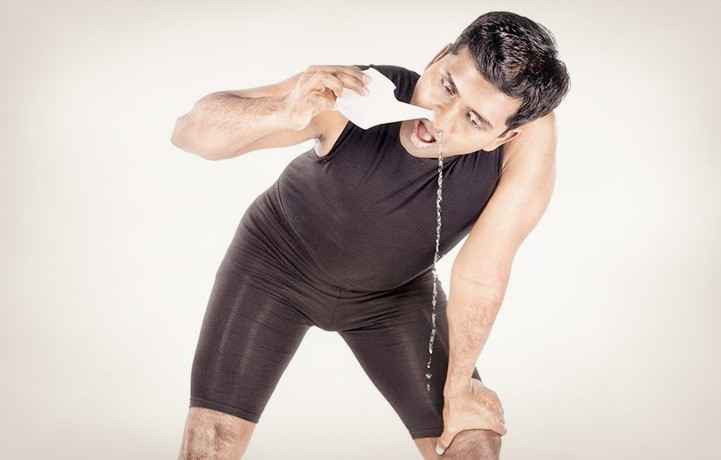
It is a simple practice and can be done along with your daily routine, say right after brushing your teeth in the morning. It takes just a few minutes. The neti pot is filled with warm salt water. The head is tilted to the side, and the pot's spout is inserted into the top nostril. The individual breathes through the mouth, keeping it open. Water is slowly poured into the nostril, and it is allowed to drain through the lower nostril. The same process is then repeated on the second side. When both sides have been cleansed, the excess water is blown out of the nostrils using Kapalbhati - a breathing technique. It is recommended that you learn this wonderful process under expert’s or your yoga teacher’s guidance. Once you learn it is very easy to do. I am sure you will start feeling better and in much better control over your nagging allergies and sinusitis. Do it daily and enjoy breathing freely and fully this season!
What you require:
Jal Neti is easy to do at home and elsewhere. Traditionally performed with only a cupped hand of salt water and a sniffing action, the technique has evolved for comfort and efficiency. Modern Jal Neti is performed by using a neti pot with a pinch of salt and lukewarm water. Neti pot is usually small and has a long spout on one side, which is small enough to be inserted gently into one of the nostrils during the process. It is commonly available in any pharmacy.
 Benefits:
Benefits:
A daily practice helps maintain the nasal hygiene by removing the dirt and bacteria trapped along with the mucus in the nostrils.
At the immediate level, neti is a great tool for any kind of respiratory disorder – sinusitis, allergy, asthma, hay fever to name a few. People invariably notice an immediate relief and sustained results AND without side effects which prescription medications fail to achieve. Neti helps to re-program the body’s natural mechanisms against respiratory complaints including sore throats, coughs, postnasal drips etc.
It pacifies the sensitive tissues inside the nose, which can assuage a bout of rhinitis or allergies.
It is very effective in dealing with asthmatic conditions making breathing easy.
It reduces tinnitus and middle ear infections.
It helps abate sinusitis or migraine attack.
It can alleviate upper respiratory complaints like sore throats, tonsils and dry coughs.
It helps flush the tear ducts, encouraging clearer vision and gives a sparkle to the eyes.
Clearing of nasal passages helps improve a sense of smell and thereby improves digestion.
It may help with better sleeping and less snoring.
It actually calms the nervous system and the mind. Helps relieve stress and brings clarity to the mind.
Neti has a cooling and soothing effect on the brain and is therefore beneficial for headaches, migraine, depression, mental tensions and temper tantrums.
People have experienced a reduction in their anger by practicing Jal Neti regularly.
The yogis practice this as it improves the quality of their meditation. It is very effective for meditation as it works on the subtle effects of the olfactory bulb, and the psychic center, which is known as the Ajna Chakra in yoga.
It is excellent for those trying to give up smoking. It reduces mouth breathing and re-sensitizes the nose to the indecency and discomfort of ingesting smoke, therefore deprogramming the brain of the physical and psychological addiction.

Precautions:
The nose should be dried properly after the process. People with high blood pressure should be careful during this part. If one feels dizzy while drying the nose then it should be done standing upright.
Take care that you do not leave any water in the nasal passages as it might cause an infection.
Like any other yogic practice learn it from an expert practitioner.
Jal Neti goes much beyond nasal cleansing and helps in aligning your body, mind and soul. Hence, it should be practiced daily and not when one has a nasal blockage or cold.
Get ready to consider shedding your apprehension and trying this wonderful practice. If you wish to reap maximum benefits from the ‘Jal Neti’ kriya and get rid of long-term sinus and throat issues, Art of Living offers yoga retreats where you can learn this wonderful technique under experts’ guidance. Here apart from the ‘Jal Neti’, you will also learn other cleansing kriyas like Shankh Prakshalan and give yourself a complete detox which ensures the effective functioning of your body and mind.
Breathe free because you were born to do so!
This content is not intended to be a substitute for professional medical advice, diagnosis or treatment. Always seek the advice of your physician or other qualified health provider with any questions you may have regarding a medical condition.
By Sejal Shah, E-YRT 500 Sri Sri Yoga Teacher, YACEP, Art of Living Teacher, NYU Post Graduate Medical School approved Yoga-CME retreat facilitator, Mind-Body Wellness Writer, Homeopath





















